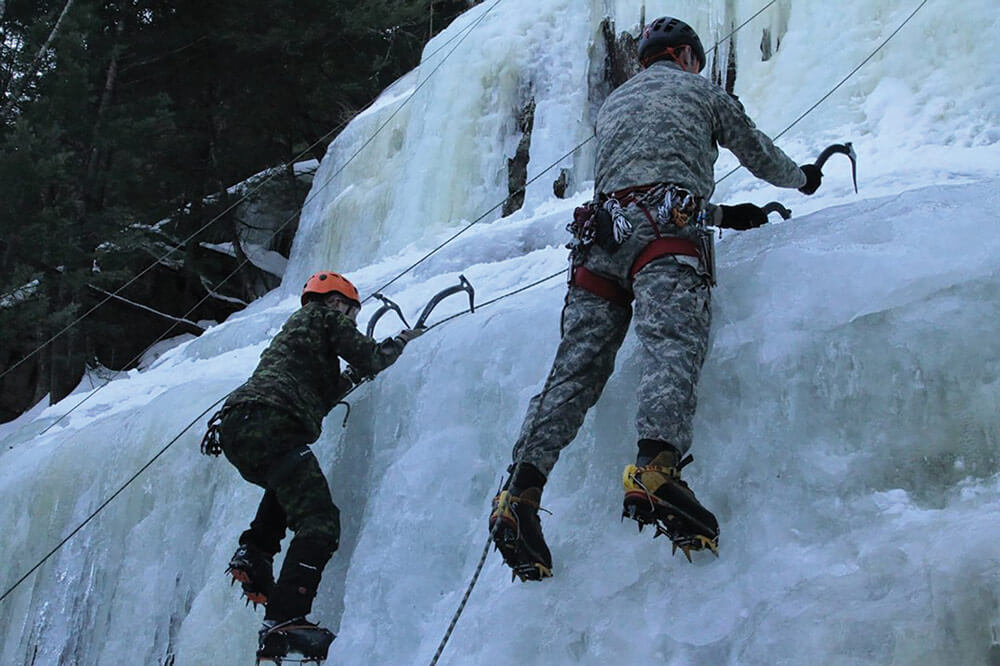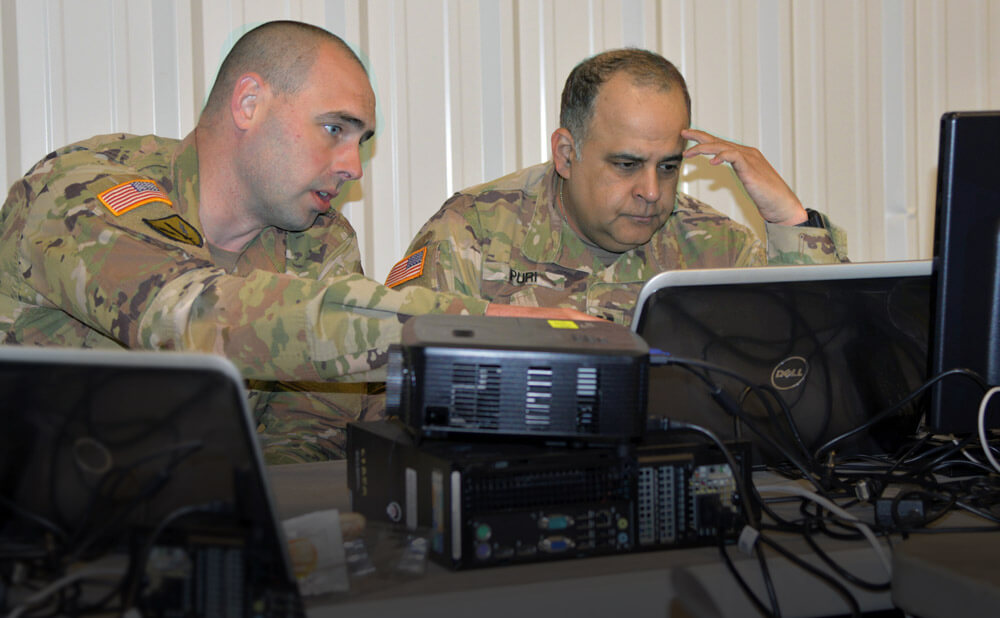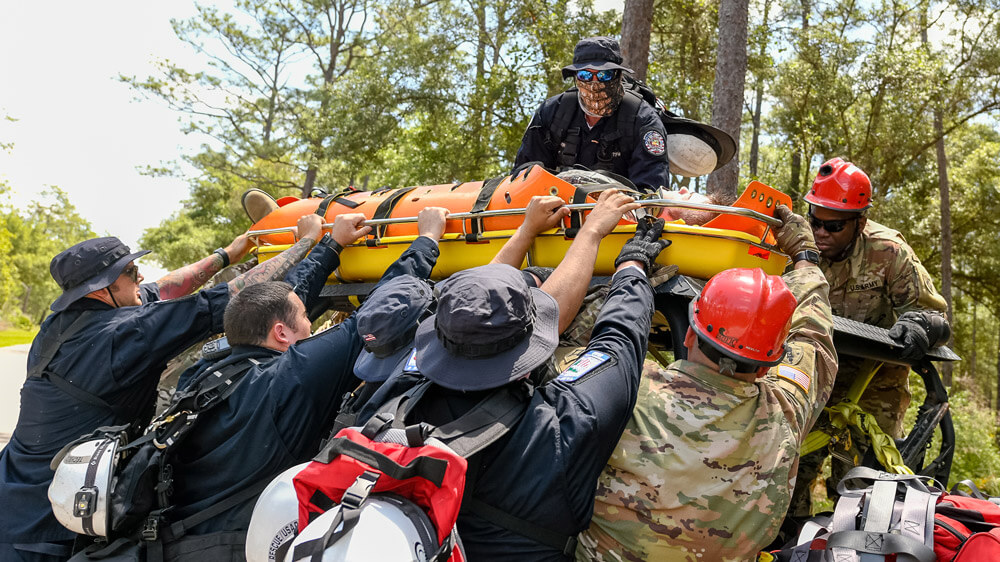A company of mountain infantrymen from the New Hampshire Army National Guard and a platoon of reservists from the Canadian Armed Forces convened here and at Fort Devens, Massachusetts, to conduct training, Feb. 10–15.
The multinational training comprised basic infantry operations, mountaineering and cold weather operations. Small unit tactics were the focus of the exercise, while participants from both sides gained familiarity with each other’s methods and terminology to improve interoperability.
The weekend featured very differently clad military combatants. Guard members wore Army Combat Uniform patterns; their counterparts were clad in Canadian Disruptive Patterned uniforms and equipment, known as CADPAT. And as the Canadians traversed the densely wooded terrain of Fort Devens, they fired training ammunition through their green-accented Colt Canada C7 rifles.
But when it came to tactics, techniques and procedures, there was little difference, according to SGT Ian Ross, an infantryman with Armoured Reconnaissance, Prince Edward Island Regiment.
“Interoperability is the name of the game,” SGT Ross said. “It’s more so just in the SOPs and the day-to-day jargon that you really see the difference.”
Differences in military jargon surfaced with the most basic terms during after action reports and discussions following breaks in the action. While words such as “squad” and “Soldier” are common to U.S. forces, “section” and “troop” are their Canadian equivalents.
“We definitely refer to many of the same things with different words, even though we all speak English,” said CPT Sam Palmer, an infantry officer from Vermont who served as an observer-controller. “Little issues, but the kind of thing that after two days of training together, they tend to work out.”
With temperatures hovering just above freezing during most of the event, the training was conducted in cold, wet conditions marked by rains that were torrential at times.
“It was cold, but you get over it,” said SPC Gage Evans, an infantryman with New Hampshire’s Charlie Company, 3rd Battalion, 172nd Infantry Regiment (Mountain). “It was still fun.”
CPL Alex LeBlanc, an infantryman with the Princess Louise Fusiliers, Halifax, Nova Scotia, likened the New England winter to a Canadian spring, but conceded its challenges.
“You burn a lot of calories just trying to stay warm,” CPL LeBlanc said. “It’s learning to be comfortable when you’re just consistently uncomfortable. I think it’s one of the hardest things to deal with mentally.”
Undeterred by weather, Canadian troops and Soldiers from Charlie Company eventually converged on the frozen waterfall at Cathedral Ledge in North Conway to strengthen their climbing skills. The 700-foot frozen waterfall offered a unique training opportunity for some of the troops from Nova Scotia who were unaccustomed to the steepness of terrain and scale of the ice formation.
“They can build their proficiencies, because we can provide the terrain and expertise,” said SSG Dustin Glidden of Charlie Company. “It makes other terrain easier to negotiate.”
Climbers donned spiked footwear, rope harnesses for rappelling and swapped out their Kevlar helmets for orange, half-domed models designed specifically for mountaineering. SSG Glidden then guided them on how to ascend and react to falling chunks of ice.
“Try to get as small as you can under your helmet,” cautioned SSG Glidden, who stressed the importance of resisting the instinctive urge to look up when warned of falling ice. “If you look at mine, it has taken quite a beating.”
Each of the climbers repeatedly scaled the towering ice formation without incident.
CPT Darrin Pring, platoon commander for the Nova Scotia Highlanders assessed the entire exercise as the epitome of teamwork and cooperation between allied nations as they strive to achieve better interoperability.
BY SGT Charles Johnston, New Hampshire National Guard



